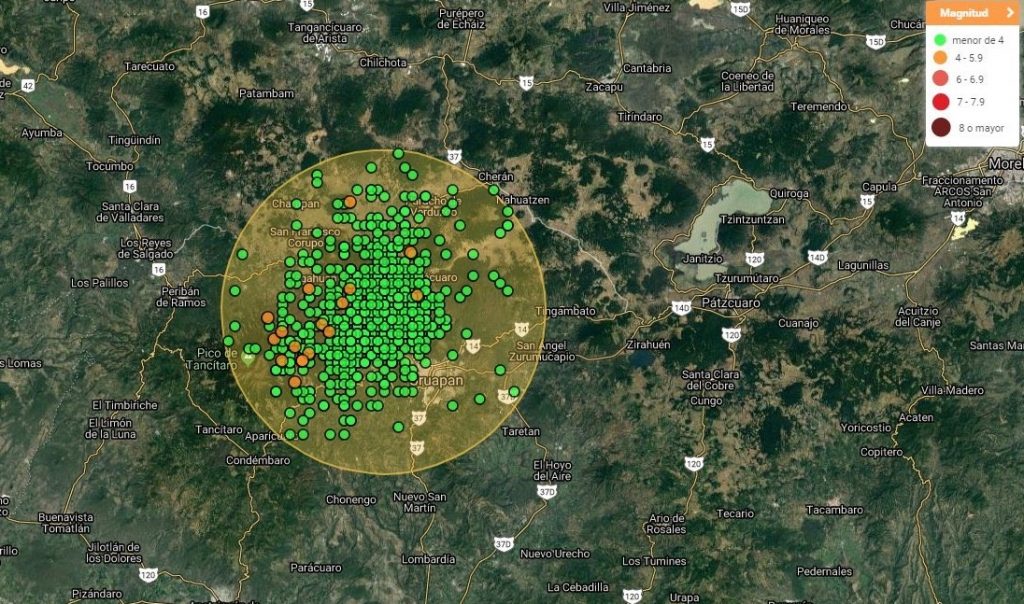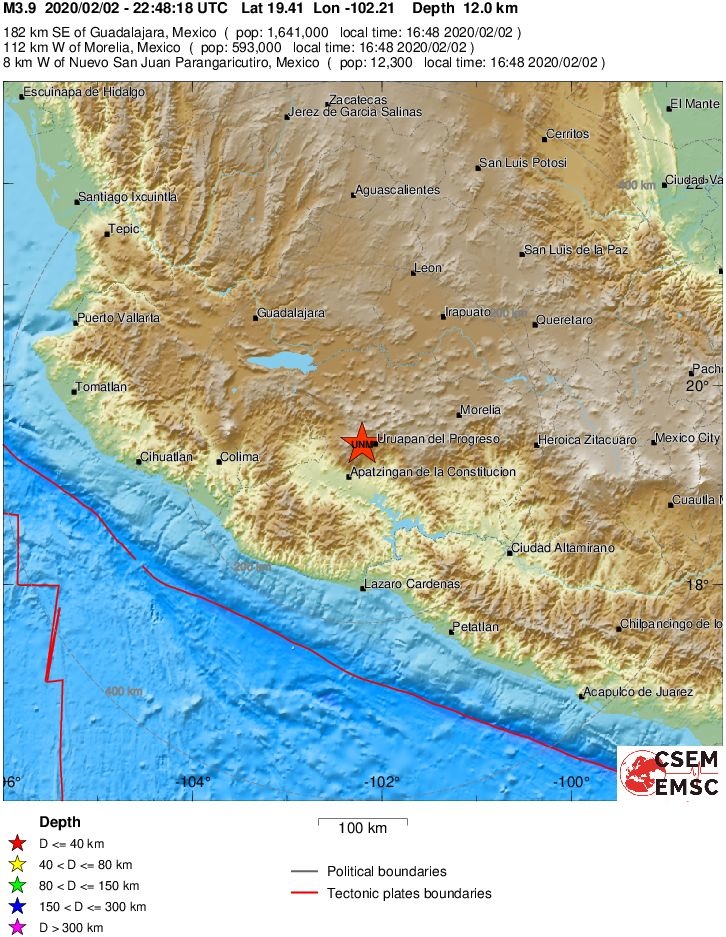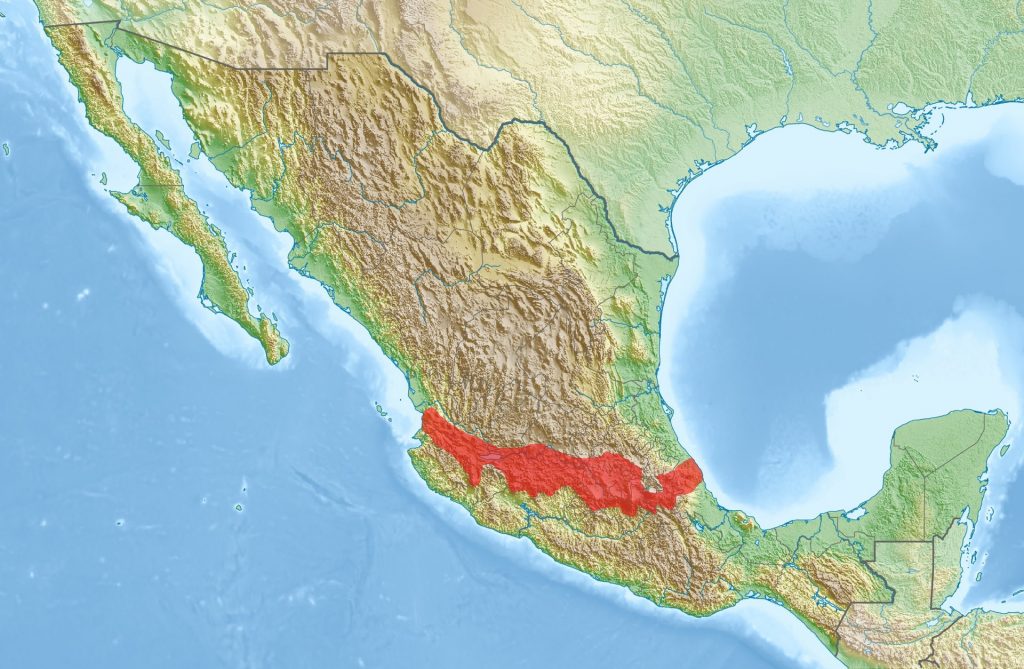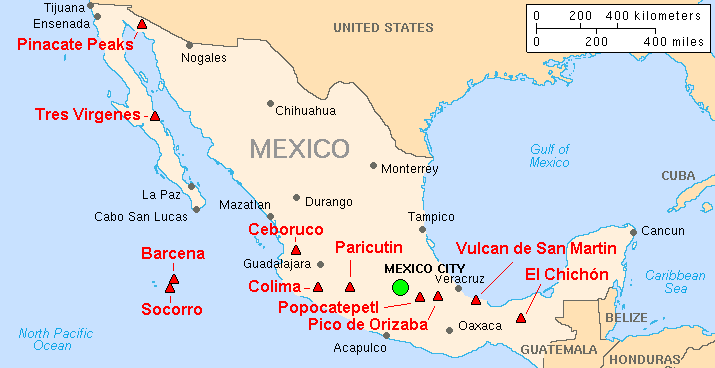The Michoacán–Guanajuato volcanic field contains 1400 vents, mostly cinder cones, spread over an area of 200 kilometers (120 miles) x 250 kilometers (160 miles) in Mexico. So it’s huge!
Over the last month, 1824 tremors were measured along the Trans-Mexican Volcanic Belt near Uruapan, Michoacán. This could indicate magma intrusion and a imminent eruption of the well-known Jorullo and Parícutin volcanoes.

The largest earthquakes of the swarm, two M4.1 tremors, hit on January 23, 2020 and on February 2, 2020.
In the meantime, it is still too early to say if there is a link between the enhanced seismic activity and a magmatic intrusion under the volcanic area. But read below and learn why a new volcanic eruption is very plausible.

Geologic Setting of the Michoacán-Guanajuato volcanic field
The Michoacán-Guanajuato volcanic field lies on and was produced by the Trans-Mexican Volcanic Belt, linking the west to the east coast of central Mexico.

The 40,000 square kilometers (15,000 sq mi) field includes the Sierra Nevada mountain range (some instinct volcanoes) and is filled with small shield volcanoes, maars, tuff rings and lava domes.
The volcanic activity is triggered by the subduction of the Rivera and Cocos plates along the Middle America Trench and has created the Central Mexican Plateau, rock deposits up to 1.8 kilometers (1.1 miles) deep and extremely fertile soils.

The Parícutin volcano is the youngest of the approximately 1,400 volcanic vents of the eruptive field. It’s immediate predecessor, El Jorullo, also in Michoacán, erupted in 1759.
Previous eruptions in the Michoacán-Guanajuato volcanic field
El Parícutin: 1943-1952
The Parícutin volcano began as a fissure in a cornfield, but grew very quickly, reaching five stories height in just a week and 336 meters (1,100 ft) after a year. At the end of the eruption in 1952, it reached 424 meters (1,391 ft).
The nearby villages of Paricutín and San Juan Parangaricutiro were both buried in lava and ash and the residents relocated to nearby lands.
While no deaths were attributed to lava or gas asphyxiation, three residents died from lightnings triggered by the eruptions.
El Jorullo: 1759−1774
The eruption (VEI-4) of the El Jorullo volcano – 1,320 meters (4,331 ft) – began on September 29, 1759, following a swarm of earthquakes.
The phreatic and phreatomagmatic activity ended 15 years later in 1774 after a huge area of fertile area was covered with sticky mud flows, water flows and ash falls. This is the longest cinder cone eruption known .
The following eruptions (cinder cones can explode several times) were magmatic and led to the formation of four smaller cinder cones on its flanks.
Eruption ahead?
Cinder cones are believed to be monogenetic volcanoes. This means that once it has finished erupting, it will never erupt again. So this would mean that any new eruptions in the Michoacan-Guanajuato volcanic field will erupt in a new location.
Again El Jorullo just shows the opposite behavior as it erupted multiple times in the past. And it seems that Parícutin is still hot, and continues to emit steam from the cone. Althought qualified as extinct by scientists, the forces that created the volcano are still active:
- A powerful earthquake swarm (230 earthquakes and five >M3.9) hit the volcano in 1997.
- Rumbling and black steam were reported in 1995 and 1998.
- Another series of more than 200 quakes occurred in 2006, indicating magma movement. However, no eruption was reported then.
So if we take into account that this time more than 1800 earthquakes hit the area, this is more than serious. And this enhanced seismic activity just shows that this volcanic region isn’t extinct at all! More volcanic and seismic news on Strange Sounds or Steve Quayle. [UNAM, EarthofFire]











